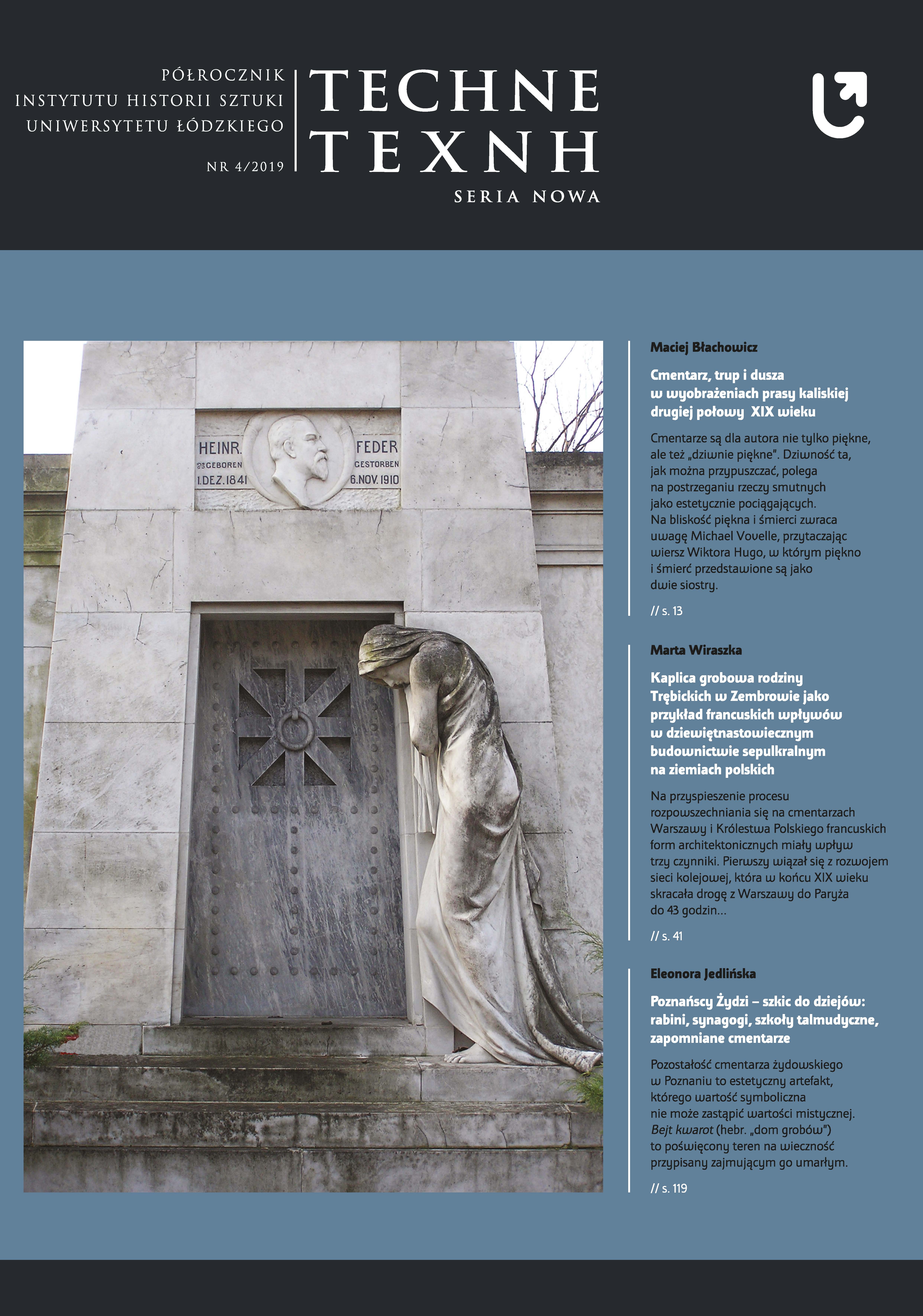Poznańscy Żydzi – szkic do dziejów: rabini, synagogi, szkoły talmudyczne, zapomniane cmentarze...
The short history of Jews in Poznań: rabbis, synagogues, Talmudic schools, and forgotten cemeteries…
Author(s): Eleonora JedlińskaSubject(s): Fine Arts / Performing Arts, Jewish studies
Published by: Wydawnictwo Uniwersytetu Łódzkiego
Keywords: Jews; Poznań; Poles; Germans; history; synagogues; cemeteries; rabbis
Summary/Abstract: The presence of the Jews in Poznań dates back to the early years of the city. The first Polish prince Bolesław the Pious, following the example of Emperor Frederic II who in 1283 granted privileges to the Jews in Vienna, has done the same in Poznań. As Poznań grew, the population of Jews in the city has been gradually growing. In 1507, based on the census conducted in that year, it appears that Poznań, at the time, was one of the largest Jewish communities in Poland. The first Jewish cemetery recorded in the town’s documents was established in the 15th century in a place called Złota Góra (Goldenberg), then it was moved to the western side to a hill called Musza Góra. At the end of the 18th century, the Jewish community made up almost a quarter of the inhabitants of Poznań. In 1793 the city came under the Prussian rule. During the fire in 1803 which devastated the northeastern part of the Old Town and the Jewish quarter. An urban planning-action undertaken by the Prussian authorities didn’t include reconstruction of the Jewish quarter. The Jewish cemetery on Musza Góra existed until 1804 when the Jews were forced to leave. The Jewish community was given land for a new cemetery on Głogowska Street. The history of Poznań’s Jews is a parable of a non-existent place, lost between the tenement houses and the backyard of Lazarus district (Łazarz). Once intellectually and the quantitatively significant Jewish community has disappeared. The latest Jewish cemetery in Poznań has been established in the 1930s on Szamarzewskiego Street. In the documents of the Municipal Executive Board in Poznań, it is called: Jewish Cemetery. Nowadays it’s nonexistent, as it was turned into gardens.
Journal: TECHNE. Seria Nowa
- Issue Year: 2019
- Issue No: 4
- Page Range: 119-136
- Page Count: 18
- Language: Polish

